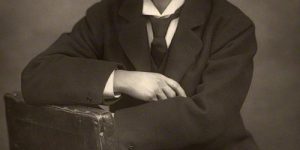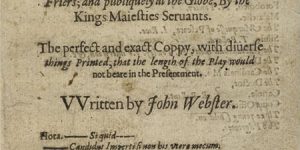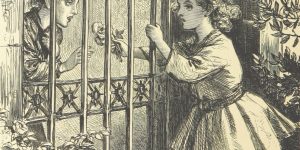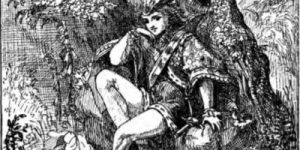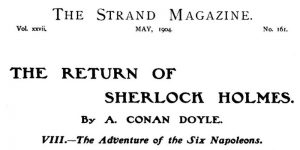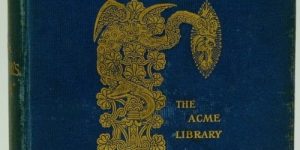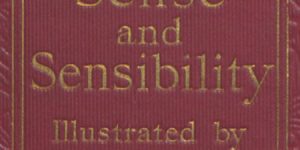The Great Boer War by Arthur Conan Doyle
The Great Boer War Preface To The Final Edition
The Great Boer War Chapter I. The Boer Nations
The Great Boer War Chapter II. The Cause Of Quarrel
The Great Boer War Chapter III. The Negotiations
The Great Boer War Chapter IV. The Eve Of War
The Great Boer War Chapter V. Talana Hill
The Great Boer War Chapter VI. Elandslaagte And Rietfontein
The Great Boer War Chapter VII. The Battle Of Ladysmith
The Great Boer War Chapter VIII. Lord Methuen’s Advance
The Great Boer War Chapter IX. Battle Of Magersfontein
The Great Boer War Chapter X. The Battle Of Stormberg
The Great Boer War Chapter XI. Battle Of Colenso
The Great Boer War Chapter XII. The Dark Hour
The Great Boer War Chapter XIII. The Siege Of Ladysmith
The Great Boer War Chapter XIV. The Colesberg Operations
The Great Boer War Chapter XV. Spion Kop
The Great Boer War Chapter XVI. Vaalkranz
The Great Boer War Chapter XVII. Buller’s Final Advance
The Great Boer War Chapter XVIII. The Siege And Relief Of Kimberley
The Great Boer War Chapter XIX. Paardeberg
The Great Boer War Chapter XX. Roberts’s Advance On Bloemfontein
The Great Boer War Chapter XXI. Strategic Effects Of Lord Roberts’s March
The Great Boer War Chapter XXII. The Halt At Bloemfontein
The Great Boer War Chapter XXIII. The Clearing Of The South-East
The Great Boer War Chapter XXIV. The Siege Of Mafeking
The Great Boer War Chapter XXV. The March On Pretoria
The Great Boer War Chapter XXVI. Diamond Hill—Rundle’s Operations
The Great Boer War Chapter XXVII. The Lines Of Communication
The Great Boer War Chapter XXVIII. The Halt At Pretoria
The Great Boer War Chapter XXIX. The Advance To Komatipoort
The Great Boer War Chapter XXX. The Campaign Of De Wet
The Great Boer War Chapter XXXI. The Guerilla Warfare In The Transvaal: Nooitgedacht
The Great Boer War Chapter XXXII. The Second Invasion Of Cape Colony
The Great Boer War Chapter XXXIII. The Northern Operations From January To April, 1901
The Great Boer War Chapter XXXIV. The Winter Campaign (April To September, 1901)
The Great Boer War Chapter XXXV. The Guerilla Operations In Cape Colony
The Great Boer War Chapter XXXVI. The Spring Campaign (September To December, 1901)
The Great Boer War Chapter XXXVII. The Campaign Of January To April, 1902
The Great Boer War Chapter XXXVIII. De La Rey’s Campaign Of 1902
The Great Boer War Chapter XXXIX. The End
The Great Boer War Chapter XXIII. The Clearing Of The South-East
Lord Roberts never showed his self-command and fixed purpose more clearly than during his six weeks’ halt at Bloemfontein. De Wet, the most enterprising and aggressive of the Boer commanders, was attacking his eastern posts and menacing his line of communications. A fussy or nervous general would have harassed his men and worn out his horses by endeavouring to pursue a number of will-of-the-wisp commandos. Roberts contented himself by building up his strength at the capital, and by spreading nearly twenty thousand men along his line of rail from Bloemfontein to Bethulie. When the time came he would strike, but until then he rested. His army was not only being rehorsed and reshod, but in some respects was being reorganised. One powerful weapon which was forged during those weeks was the collection of the mounted infantry of the central army into one division, which was placed under the command of Ian Hamilton, with Hutton and Ridley as brigadiers. Hutton’s brigade contained the Canadians, New South Wales men, West Australians, Queenslanders, New Zealanders, Victorians, South Australians, and Tasmanians, with four battalions of Imperial Mounted Infantry, and several light batteries. Ridley’s brigade contained the South African irregular regiments of cavalry, with some imperial troops. The strength of the whole division came to over ten thousand rifles, and in its ranks there rode the hardiest and best from every corner of the earth over which the old flag is flying.
A word as to the general distribution of the troops at this instant while Roberts was gathering himself for his spring. Eleven divisions of infantry were in the field. Of these the 1st (Methuen’s) and half the 10th (Hunter’s) were at Kimberley, forming really the hundred-mile-distant left wing of Lord Roberts’s army. On that side also was a considerable force of Yeomanry, as General Villebois discovered. In the centre with Roberts was the 6th division (Kelly-Kenny’s) at Bloemfontein, the 7th (Tucker’s) at Karee, twenty miles north, the 9th (Colvile’s) and the 11th (Pole-Carew’s) near Bloemfontein. French’s cavalry division was also in the centre. As one descended the line towards the Cape one came on the 3rd division (Chermside’s, late Gatacre’s), which had now moved up to Reddersberg, and then, further south, the 8th (Rundle’s), near Rouxville. To the south and east was the other half of Hunter’s division (Hart’s brigade), and Brabant’s Colonial division, half of which was shut up in Wepener and the rest at Aliwal. These were the troops operating in the Free State, with the addition of the division of mounted infantry in process of formation.
There remained the three divisions in Natal, the 2nd (Clery’s), the 4th (Lyttelton’s), and the 5th (Hildyard’s, late Warren’s), with the cavalry brigades of Burn-Murdoch, Dundonald, and Brocklehurst. These, with numerous militia and unbrigaded regiments along the lines of communication, formed the British army in South Africa. At Mafeking some 900 irregulars stood at bay, with another force about as large under Plumer a little to the north, endeavouring to relieve them. At Beira, a Portuguese port through which we have treaty rights by which we may pass troops, a curious mixed force of Australians, New Zealanders and others was being disembarked and pushed through to Rhodesia, so as to cut off any trek which the Boers might make in that direction. Carrington, a fierce old soldier with a large experience of South African warfare, was in command of this picturesque force, which moved amid tropical forests over crocodile-haunted streams, while their comrades were shivering in the cold southerly winds of a Cape winter. Neither our Government, our people, nor the world understood at the beginning of this campaign how grave was the task which we had undertaken, but, having once realised it, it must be acknowledged that it was carried through in no half-hearted way. So vast was the scene of operations that the Canadian might almost find his native climate at one end of it and the Queenslander at the other.
To follow in close detail the movements of the Boers and the counter movements of the British in the southeast portion of the Free State during this period would tax the industry of the historian and the patience of the reader. Let it be told with as much general truth and as little geographical detail as possible. The narrative which is interrupted by an eternal reference to the map is a narrative spoiled.
The main force of the Freestaters had assembled in the north-eastern corner of their State, and from this they made their sally southwards, attacking or avoiding at their pleasure the eastern line of British outposts. Their first engagement, that of Sanna’s Post, was a great and deserved success. Three days later they secured the five companies at Reddersberg. Warned in time, the other small British bodies closed in upon their supports, and the railway line, that nourishing artery which was necessary for the very existence of the army, was held too strongly for attack. The Bethulie Bridge was a particularly important point; but though the Boers approached it, and even went the length of announcing officially that they had destroyed it, it was not actually attacked. At Wepener, however, on the Basutoland border, they found an isolated force, and proceeded at once, according to their custom, to hem it in and to bombard it, until one of their three great allies, want of food, want of water, or want of cartridges, should compel a surrender.
On this occasion, however, the Boers had undertaken a task which was beyond their strength. The troops at Wepener were one thousand seven hundred in number, and formidable in quality. The place had been occupied by part of Brabant’s Colonial division, consisting of hardy irregulars, men of the stuff of the defenders of Mafeking. Such men are too shrewd to be herded into an untenable position and too valiant to surrender a tenable one. The force was commanded by a dashing soldier, Colonel Dalgety, of the Cape Mounted Rifles, as tough a fighter as his famous namesake. There were with him nearly a thousand men of Brabant’s Horse, four hundred of the Cape Mounted Rifles, four hundred Kaffrarian Horse, with some scouts, and one hundred regulars, including twenty invaluable Sappers. They were strong in guns—two seven-pounders, two naval twelve-pounders, two fifteen-pounders and several machine guns. The position which they had taken up, Jammersberg, three miles north of Wepener, was a very strong one, and it would have taken a larger force than De Wet had at his disposal to turn them out of it. The defence had been arranged by Major Cedric Maxwell, of the Sappers; and though the huge perimeter, nearly eight miles, made its defence by so small a force a most difficult matter, the result proved how good his dispositions were.
At the same time, the Boers came on with every confidence of victory, for they had a superiority in guns and an immense superiority in men. But after a day or two of fierce struggle their attack dwindled down into a mere blockade. On April 9th they attacked furiously, both by day and by night, and on the 10th the pressure was equally severe. In these two days occurred the vast majority of the casualties. But the defenders took cover in a way to which British regulars have not yet attained, and they outshot their opponents both with their rifles and their cannon. Captain Lukin’s management of the artillery was particularly skilful. The weather was vile and the hastily dug trenches turned into ditches half full of water, but neither discomfort nor danger shook the courage of the gallant colonials. Assault after assault was repulsed, and the scourging of the cannon was met with stolid endurance. The Boers excelled all their previous feats in the handling of artillery by dragging two guns up to the summit of the lofty Jammersberg, whence they fired down upon the camp. Nearly all the horses were killed and three hundred of the troopers were hit, a number which is double that of the official return, for the simple reason that the spirit of the force was so high that only those who were very severely wounded reported themselves as wounded at all. None but the serious cases ever reached the hands of Dr. Faskally, who did admirable work with very slender resources. How many the enemy lost can never be certainly known, but as they pushed home several attacks it is impossible to imagine that their losses were less than those of the victorious defenders. At the end of seventeen days of mud and blood the brave irregulars saw an empty laager and abandoned trenches. Their own resistance and the advance of Brabant to their rescue had caused a hasty retreat of the enemy. Wepener, Mafeking, Kimberley, the taking of the first guns at Ladysmith, the deeds of the Imperial Light Horse—it cannot be denied that our irregular South African forces have a brilliant record for the war. They are associated with many successes and with few disasters. Their fine record cannot, I think, be fairly ascribed to any greater hardihood which one portion of our race has when compared with another, for a South African must admit that in the best colonial corps at least half the men were Britons of Britain. In the Imperial Light Horse the proportion was very much higher. But what may fairly be argued is that their exploits have proved, what the American war proved long ago, that the German conception of discipline is an obsolete fetish, and that the spirit of free men, whose individualism has been encouraged rather than crushed, is equal to any feat of arms. The clerks and miners and engineers who went up Elandslaagte Hill without bayonets, shoulder to shoulder with the Gordons, and who, according to Sir George White, saved Ladysmith on January 6th, have shown for ever that with men of our race it is the spirit within, and not the drill or the discipline, that makes a formidable soldier. An intelligent appreciation of the fact might in the course of the next few years save us as much money as would go far to pay for the war.
It may well be asked how for so long a period as seventeen days the British could tolerate a force to the rear of them when with their great superiority of numbers they could have readily sent an army to drive it away. The answer must be that Lord Roberts had despatched his trusty lieutenant, Kitchener, to Aliwal, whence he had been in heliographic communication with Wepener, that he was sure that the place could hold out, and that he was using it, as he did Kimberley, to hold the enemy while he was making his plans for their destruction. This was the bait to tempt them to their ruin. Had the trap not been a little slow in closing, the war in the Free State might have ended then and there. From the 9th to the 25th the Boers were held in front of Wepener. Let us trace the movements of the other British detachments during that time.
Brabant’s force, with Hart’s brigade, which had been diverted on its way to Kimberley, where it was to form part of Hunter’s division, was moving on the south towards Wepener, advancing through Rouxville, but going slowly for fear of scaring the Boers away before they were sufficiently compromised. Chermside’s 3rd division approached from the north-west, moving out from the railway at Bethany, and passing through Reddersberg towards Dewetsdorp, from which it would directly threaten the Boer line of retreat. The movement was made with reassuring slowness and gentleness, as when the curved hand approaches the unconscious fly. And then suddenly, on April 21st, Lord Roberts let everything go. Had the action of the agents been as swift and as energetic as the mind of the planner, De Wet could not have escaped us.
What held Lord Roberts’s hand for some few days after he was ready to strike was the abominable weather. Rain was falling in sheets, and those who know South African roads, South African mud, and South African drifts will understand how impossible swift military movements are under those circumstances. But with the first clearing of the clouds the hills to the south and east of Bloemfontein were dotted with our scouts. Rundle with his 8th division was brought swiftly up from the south, united with Chermside to the east of Reddersberg, and the whole force, numbering 13,000 rifles with thirty guns, advanced upon Dewetsdorp, Rundle, as senior officer, being in command. As they marched the blue hills of Wepener lined the sky some twenty miles to the south, eloquent to every man of the aim and object of their march.
On April 20th, Rundle as he advanced found a force with artillery across his path to Dewetsdorp. It is always difficult to calculate the number of hidden men and lurking guns which go to make up a Boer army, but with some knowledge of their total at Wepener it was certain that the force opposed to him must be very inferior to his own. At Constantia Farm, where he found them in position, it is difficult to imagine that there were more than three thousand men. Their left flank was their weak point, as a movement on that side would cut them off from Wepener and drive them up towards our main force in the north. One would have thought that a containing force of three thousand men, and a flanking movement from eight thousand, would have turned them out, as it has turned them out so often before and since. Yet a long-range action began on Friday, April 20th, and lasted the whole of the 21st, the 22nd, and the 23rd, in which we sustained few losses, but made no impression upon the enemy. Thirty of the 1st Worcesters wandered at night into the wrong line, and were made prisoners, but with this exception the four days of noisy fighting does not appear to have cost either side fifty casualties. It is probable that the deliberation with which the operations were conducted was due to Rundle’s instructions to wait until the other forces were in position. His subsequent movements showed that he was not a General who feared to strike.
On Sunday night (April 22nd) Pole-Carew sallied out from Bloemfontein on a line which would take him round the right flank of the Boers who were facing Rundle. The Boers had, however, occupied a strong position at Leeuw Kop, which barred his path, so that the Dewetsdorp Boers were covering the Wepener Boers, and being in turn covered by the Boers of Leeuw Kop. Before anything could be done, they must be swept out of the way. Pole-Carew is one of those finds which help to compensate us for the war. Handsome, dashing, debonnaire, he approaches a field of battle as a light-hearted schoolboy approaches a football field. On this occasion he acted with energy and discretion. His cavalry threatened the flanks of the enemy, and Stephenson’s brigade carried the position in front at a small cost. On the same evening General French arrived and took over the force, which consisted now of Stephenson’s and the Guards brigades (making up the 11th division), with two brigades of cavalry and one corps of mounted infantry. The next day, the 23rd, the advance was resumed, the cavalry bearing the brunt of the fighting. That gallant corps, Roberts’s Horse, whose behaviour at Sanna’s Post had been admirable, again distinguished itself, losing among others its Colonel, Brazier Creagh. On the 24th again it was to the horsemen that the honour and the casualties fell. The 9th Lancers, the regular cavalry regiment which bears away the honours of the war, lost several men and officers, and the 8th Hussars also suffered, but the Boers were driven from their position, and lost more heavily in this skirmish than in some of the larger battles of the campaign. The ‘pom-poms,’ which had been supplied to us by the belated energy of the Ordnance Department, were used with some effect in this engagement, and the Boers learned for the first time how unnerving are those noisy but not particularly deadly fireworks which they had so often crackled round the ears of our gunners.
On the Wednesday morning Rundle, with the addition of Pole-Carew’s division, was strong enough for any attack, while French was in a position upon the flank. Every requisite for a great victory was there except the presence of an enemy. The Wepener siege had been raised and the force in front of Rundle had disappeared as only Boer armies can disappear. The combined movement was an admirable piece of work on the part of the enemy. Finding no force in front of them, the combined troops of French, Rundle, and Chermside occupied Dewetsdorp, where the latter remained, while the others pushed on to Thabanchu, the storm centre from which all our troubles had begun nearly a month before. All the way they knew that De Wet’s retreating army was just in front of them, and they knew also that a force had been sent out from Bloemfontein to Thabanchu to head off the Boers. Lord Roberts might naturally suppose, when he had formed two cordons through which De Wet must pass, that one or other must hold him. But with extraordinary skill and mobility De Wet, aided by the fact that every inhabitant was a member of his intelligence department, slipped through the double net which had been laid for him. The first net was not in its place in time, and the second was too small to hold him.
While Rundle and French had advanced on Dewetsdorp as described, the other force which was intended to head off De Wet had gone direct to Thabanchu. The advance began by a movement of Ian Hamilton on April 22nd with eight hundred mounted infantry upon the waterworks. The enemy, who held the hills beyond, allowed Hamilton’s force to come right down to the Modder before they opened fire from three guns. The mounted infantry fell back, and encamped for the night out of range. [Footnote: This was a remarkable exhibition of the harmlessness of shell-fire against troops in open formation. I myself saw at least forty shells, all of which burst, fall among the ranks of the mounted infantry, who retired at a contemptuous walk. There were no casualties.] Before morning they were reinforced by Smith-Dorrien’s brigade (Gordons, Canadians, and Shropshires—the Cornwalls had been left behind) and some more mounted Infantry. With daylight a fine advance was begun, the brigade moving up in very extended order and the mounted men turning the right flank of the defence. By evening we had regained the waterworks, a most important point for Bloemfontein, and we held all the line of hills which command it. This strong position would not have been gained so easily if it had not been for Pole-Carew’s and French’s actions two days before, on their way to join Rundle, which enabled them to turn it from the south.
Ian Hamilton, who had already done good service in the war, having commanded the infantry at Elandslaagte, and been one of the most prominent leaders in the defence of Ladysmith, takes from this time onwards a more important and a more independent position. A thin, aquiline man, of soft voice and gentle manners, he had already proved more than once during his adventurous career that he not only possessed in a high degree the courage of the soldier, but also the equanimity and decision of the born leader. A languid elegance in his bearing covered a shrewd brain and a soul of fire. A distorted and half-paralysed hand reminded the observer that Hamilton, as a young lieutenant, had known at Majuba what it was to face the Boer rifles. Now, in his forty-seventh year, he had returned, matured and formidable, to reverse the results of that first deplorable campaign. This was the man to whom Lord Roberts had entrusted the command of that powerful flanking column which was eventually to form the right wing of his main advance. Being reinforced upon the morning after the capture of the Waterworks by the Highland Brigade, the Cornwalls, and two heavy naval guns, his whole force amounted to not less than seven thousand men. From these he detached a garrison for the Waterworks, and with the rest he continued his march over the hilly country which lies between them and Thabanchu.
One position, Israel’s Poort, a nek between two hills, was held against them on April 25th, but was gained without much trouble, the Canadians losing one killed and two wounded. Colonel Otter, their gallant leader, was one of the latter, while Marshall’s Horse, a colonial corps raised in Grahamstown, had no fewer than seven of their officers and several men killed or wounded. Next morning the town of Thabanchu was seized, and Hamilton found himself upon the direct line of the Boer retreat. He seized the pass which commands the road, and all next day he waited eagerly, and the hearts of his men beat high when at last they saw a long trail of dust winding up to them from the south. At last the wily De Wet had been headed off! Deep and earnest were the curses when out of the dust there emerged a khaki column of horsemen, and it was realised that this was French’s pursuing force, closely followed by Rundle’s infantry from Dewetsdorp. The Boers had slipped round and were already to the north of us.
It is impossible to withhold our admiration for the way in which the Boer force was manoeuvred throughout this portion of the campaign. The mixture of circumspection and audacity, the way in which French and Rundle were hindered until the Wepener force had disengaged itself, the manner in which these covering forces were then withdrawn, and finally the clever way in which they all slipped past Hamilton, make a brilliant bit of strategy. Louis Botha, the generalissimo, held all the strings in his hand, and the way in which he pulled them showed that his countrymen had chosen the right man for that high office, and that his was a master spirit even among those fine natural warriors who led the separate commandos.
Having got to the north of the British forces Botha made no effort to get away, and refused to be hustled by a reconnaissance developing into an attack, which French made upon April 27th. In a skirmish the night before Kitchener’s Horse had lost fourteen men, and the action of the 27th cost us about as many casualties. It served to show that the Boer force was a compact body some six or seven thousand strong, which withdrew in a leisurely fashion, and took up a defensive position at Houtnek, some miles further on. French remained at Thabanchu, from which he afterwards joined Lord Roberts’ advance, while Hamilton now assumed complete command of the flanking column, with which he proceeded to march north upon Winburg.
The Houtnek position is dominated upon the left of the advancing British force by Thoba Mountain, and it was this point which was the centre of Hamilton’s attack. It was most gallantly seized by Kitchener’s Horse, who were quickly supported by Smith-Dorrien’s men. The mountain became the scene of a brisk action, and night fell before the crest was cleared. At dawn upon May 1st the fighting was resumed, and the position was carried by a determined advance of the Shropshires, the Canadians, and the Gordons: the Boers escaping down the reverse slope of the hill came under a heavy fire of our infantry, and fifty of them were wounded or taken. It was in this action, during the fighting on the hill, that Captain Towse, of the Gordons, though shot through the eyes and totally blind, encouraged his men to charge through a group of the enemy who had gathered round them. After this victory Hamilton’s men, who had fought for seven days out of ten, halted for a rest at Jacobsrust, where they were joined by Broadwood’s cavalry and Bruce Hamilton’s infantry brigade. Ian Hamilton’s column now contained two infantry brigades (Smith-Dorrien’s and Bruce Hamilton’s), Ridley’s Mounted Infantry, Broadwood’s Cavalry Brigade, five batteries of artillery, two heavy guns, altogether 13,000 men. With this force in constant touch with Botha’s rearguard, Ian Hamilton pushed on once more on May 4th. On May 5th he fought a brisk cavalry skirmish, in which Kitchener’s Horse and the 12th Lancers distinguished themselves, and on the same day he took possession of Winburg, thus covering the right of Lord Roberts’s great advance.
The distribution of the troops on the eastern side of the Free State was, at the time of this the final advance of the main army, as follows—Ian Hamilton with his mounted infantry, Smith-Dorrien’s brigade, Macdonald’s brigade, Bruce Hamilton’s brigade, and Broadwood’s cavalry were at Winburg. Rundle was at Thabanchu, and Brabant’s colonial division was moving up to the same point. Chermside was at Dewetsdorp, and had detached a force under Lord Castletown to garrison Wepener. Hart occupied Smithfield, whence he and his brigade were shortly to be transferred to the Kimberley force. Altogether there could not have been fewer than thirty thousand men engaged in clearing and holding down this part of the country. French’s cavalry and Pole-Carew’s division had returned to take part in the central advance.
Before entering upon a description of that great and decisive movement, one small action calls for comment. This was the cutting off of twenty men of Lumsden’s Horse in a reconnaissance at Karee. The small post under Lieutenant Crane found themselves by some misunderstanding isolated in the midst of the enemy. Refusing to hoist the flag of shame, they fought their way out, losing half their number, while of the other half it is said that there was not one who could not show bullet marks upon his clothes or person. The men of this corps, volunteer Anglo-Indians, had abandoned the ease and even luxury of Eastern life for the hard fare and rough fighting of this most trying campaign. In coming they had set the whole empire an object-lesson in spirit, and now on their first field they set the army an example of military virtue. The proud traditions of Outram’s Volunteers have been upheld by the men of Lumsden’s Horse. Another minor action which cannot be ignored is the defence of a convoy on April 29th by the Derbyshire Yeomanry (Major Dugdale) and a company of the Scots Guards. The wagons were on their way to Rundle when they were attacked at a point about ten miles west of Thabanchu. The small guard beat off their assailants in the most gallant fashion, and held their own until relieved by Brabazon upon the following morning.
This phase of the war was marked by a certain change in the temper of the British. Nothing could have been milder than the original intentions and proclamations of Lord Roberts, and he was most ably seconded in his attempts at conciliation by General Pretyman, who had been made civil administrator of the State. There was evidence, however, that this kindness had been construed as weakness by some of the burghers, and during the Boer incursion to Wepener many who had surrendered a worthless firearm reappeared with the Mauser which had been concealed in some crafty hiding-place. Troops were fired at from farmhouses which flew the white flag, and the good housewife remained behind to charge the ‘rooinek’ extortionate prices for milk and fodder while her husband shot at him from the hills. It was felt that the burghers might have peace or might have war, but could not have both simultaneously. Some examples were made therefore of offending farmhouses, and stock was confiscated where there was evidence of double dealing upon the part of the owner. In a country where property is a more serious thing than life, these measures, together with more stringent rules about the possession of horses and arms, did much to stamp out the chances of an insurrection in our rear. The worst sort of peace is an enforced peace, but if that can be established time and justice may do the rest.
The operations which have been here described may be finally summed up in one short paragraph. A Boer army came south of the British line and besieged a British garrison. Three British forces, those of French, Rundle, and Ian Hamilton, were despatched to cut it off. It successfully threaded its way among them and escaped. It was followed to the northward as far as the town of Winburg, which remained in the British possession. Lord Roberts had failed in his plan of cutting off De Wet’s army, but, at the expense of many marches and skirmishes, the south-east of the State was cleared of the enemy.

